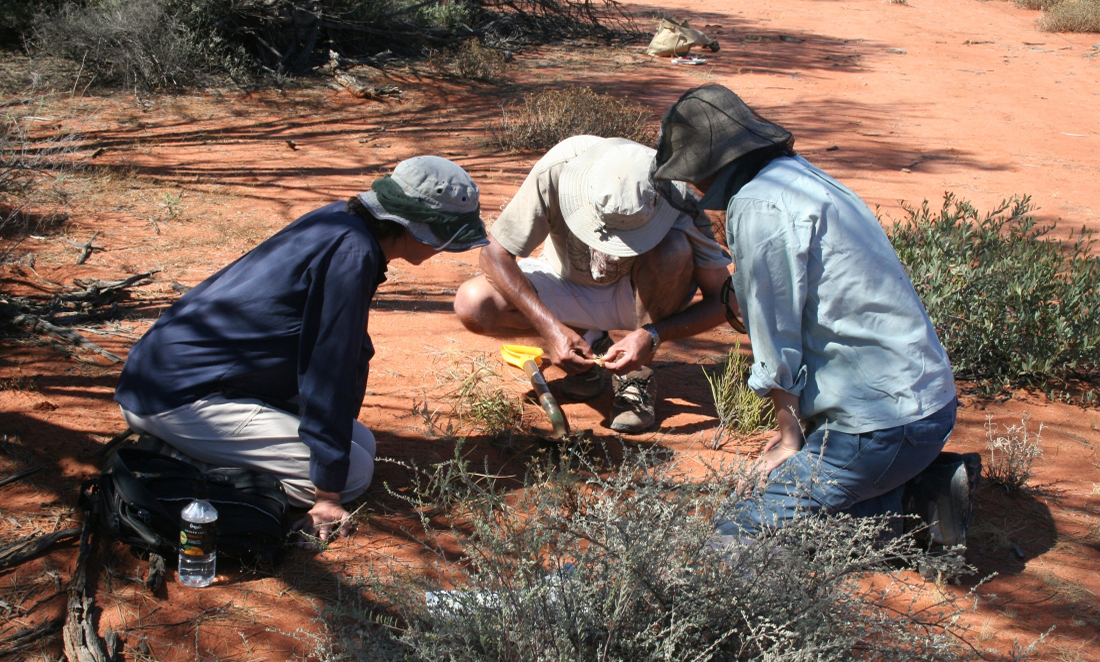When the last known population of the arid bronze azure butterfly disappeared from its only known location near Kalgoorlie in 1993, conservationists feared it had become extinct.
Hoped dimmed further in 2006 when a photographer attempting to photograph every butterfly species in the country again failed to encounter the butterfly at the site.
Disappointed, the photographer packed up and headed west to the coast. Taking a shortcut off the main highway to his next target site, he noted a flash of colour on the road near a nature reserve outside Mukinbudin. He was about 300km away from the arid bronze azure butterflies’ former home.
Butterflies crossing the road. Medium-sized. Fast-flying. Dark brown to black with iridescent bronze or purple bronze flashes on the upper side of their wings.
Surely it couldn’t be the arid bronze azure?
Surely he couldn’t be so lucky as to stumble upon a new population by sheer chance?
The photos he took that day and subsequent visits to the site confirmed this was indeed a new population of the critically endangered species.

Race to save a butterfly
Excited, state conservation staff raced to the region to work out the size of the population.
They’ve visited nearly every year since to monitor the population, which has now almost doubled in size.
And along the way, they’ve become enraptured by this unusual species.
Not only is it extremely rare, but it has adapted to survive in its arid home.
Bizarre lifestyle traits
Like some other butterfly species, the arid bronze became fed up with the scarcity of plants offering food in this arid region.
It decided to change the menu. Its next choice of cuisine? Ants.
Arid azure butterfly larvae have adapted to emit a chemical that fools bearded sugar ants into thinking the larvae are queen ants.
The duped ants escort the larvae to their ant nurseries where the butterfly larvae are either fed by the ants or, more likely, feed on the baby ants.
Just what happens deep below ground remains a mystery.

So reliant on ants have the butterflies become that their very survival is now inextricably linked to the ants’ survival.
Future hope
Department of Biodiversity, Conservation and Attractions senior research scientist Matthew Williams says the ants are key to finding and supporting new populations of the rare butterfly.
By tracking down other populations of the ants, department staff have recently found a second population of the butterflies about 70km away.
“All it would take to translocate them is a fast car and one guy with a net.”
And they are now seeking out another suitable ant population to which they could translocate butterflies.
“All it would take to translocate them is a fast car and one guy with a net,” Matt says.
“You’d need to catch perhaps five or 10 females, put them in jars and drive them to the new site to let them go.”
With patches of native bush becoming fewer and farther between, such a move may be the only hope of helping this rare and bizarre butterfly to survive.








